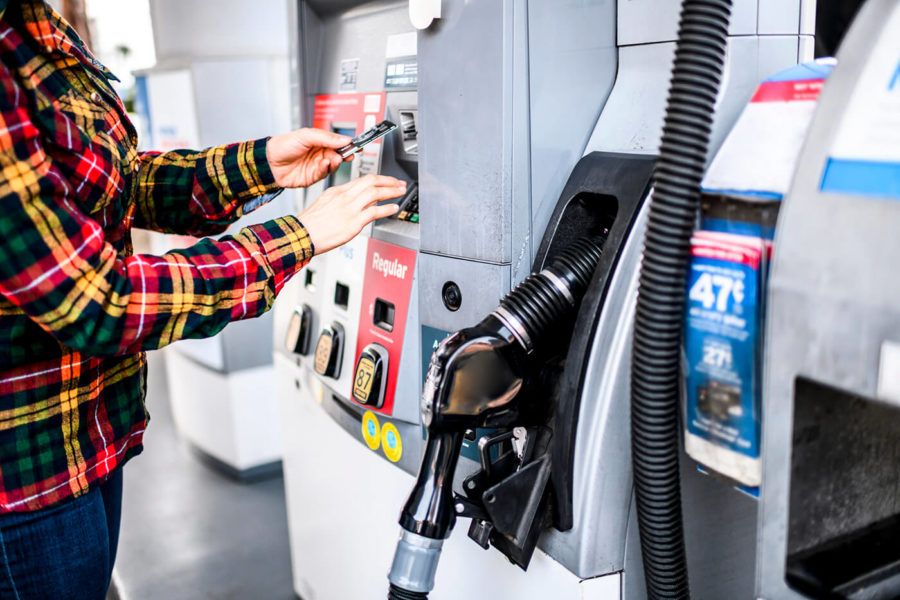In this article:
Most of the time, paying with a contactless card is fast and secure. But as more and more cardholders use contactless payment methods for everyday transactions, the drawbacks of paying this way have become familiar too.
Your contactless card may not work if the merchant you've visited doesn't have the correct card reader, for example, or if you haven't yet activated the card, among other reasons. Once you rule out the most obvious potential causes for the malfunction, you may have to do some digging with the card issuer to determine the root of the problem.
Here are the most common issues you could encounter with contactless cards, and how to handle them.
Reasons Why Your Contactless Card May Be Declined
In most cases, you'll tap your contactless card on a merchant's card reader and then see a message confirming the purchase. No need to insert a card with a chip, or to sign a receipt or screen. But if your card can't be read or your purchase is declined, the charge won't go through.
There are several reasons why your contactless card may not work. First, there could be issues at the register, including:
- It's an incompatible terminal. For a contactless card to be read, the merchant must have a "tap and pay" terminal at the register. Some businesses may not yet have the latest technology available, meaning you'll have to swipe or insert a chip-enabled card in order to make a payment. Even when a card reader has a label saying it accepts contactless payments, you may find your card isn't recognized due to a problem with the reader, and you'll have to pay an alternative way.
- You're tapping too quickly or from too far away. You may also experience problems with a terminal if you don't allow enough time for your card to be read, or you don't bring it close enough. Placing your card directly on the reader can cause problems too. For best results, hold your card within an inch or two of the contactless symbol on the terminal (four rounded vertical lines similar to a Wi-Fi signal on its side).
Or there could be problems with your card, such as:
- Your card isn't activated. If you recently received a new contactless card in the mail, activate it first; otherwise, your charges will be declined.
- Your card is expired. Using a card beyond its expiration date will also result in a declined charge. When you get your new replacement card, activate it and dispose of the old one right away.
Finally, consider whether there's an account issue affecting your card:
- Credit limit reached: If you're using a credit card, the card will come with a credit limit, or a total amount of money that you can charge to it, typically based on factors including your credit score and history. When you reach that limit, your card may be declined. You might be able to request a credit limit increase, but if you're maxing out a card, that's a signal to focus on reducing debt rather than spending more.
- Insufficient funds in linked bank account: If you're using a debit card, then the equivalent of your credit limit is the total amount of funds in your checking account. If the purchase exceeds that amount, the card likely will be declined.
- Card flagged for fraud: If you're traveling, for example, and haven't alerted your credit card company, the issuer may flag the purchase as potential credit card fraud and freeze your account. If this happens, call the customer service number on the card to sort it out.
- Large pending transaction: You may not be able to make payments if you've used the card to make a purchase, such as a rental car booking, and the company put a hold on your card. You can ask the company to lift the hold if you need to use the card beforehand, or use a different card in the meantime.
- Past-due bill: If you're behind on credit card payments, the credit card company can limit your ability to make new charges, leading to a declined card. Reach out to the issuer to identify if this is the reason your card didn't work, and how much you'll need to pay to bring your account current.
What to Do if Your Contactless Card Is Declined
When your contactless card doesn't work, try using the chip on the card or swiping it instead. You can also try paying with a mobile wallet such as Apple Pay or Google Pay. If those methods don't work, in the short term, switch to using a different card or cash. Then consider the options above and look into whether, for instance, you need to activate the card, call your issuer or wait until a pending transaction clears.
Making Use of a Contactless Card
Using a contactless card, in most circumstances, limits the amount of time you spend at checkout and can make you feel more secure when shopping in person.
Choosing the right contactless credit card can even mean getting the benefits of both a convenient payment method and cash back or travel rewards, for example. But as with any other credit card, it's crucial to build a budget and stick to a clear spending plan so that you can avoid falling into more debt than you can manage. If you're concerned about your debt and how it may be affecting your credit score, you can get a free credit score from Experian to see where you stand.

